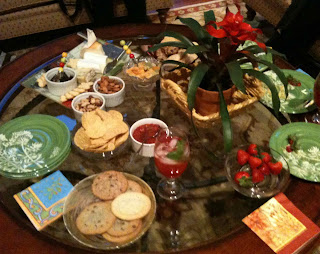Author: Julian Barnes
Host: Joanne
 | |
| What happens when the photographer is late to the session. |
Yes, our group was small this month, but a small group makes for in-depth analysis and time spent considering nuance. Had Shirley been able to join us, we would have asked for a grade on our discussion. We're sure it would have been an A.
Insights and Opinions
+ First words spoken: "I'm not finished, but I am loving the language."+ Second words spoken: "As soon as I finished, I immediately wanted to go back and read it again, this time re-visiting cues I missed or glossed over on first read."
+ Seemingly simple, a straightforward walk through memory and past events that collide with present-day experience, this work plays with memories and their accuracy. The readers sees the past through the eyes of the first-person narrator, but at some point begins asking -- is that really what happened? Is he a reliable source?
+ The main character regrets the fact that he married someone safe and settled into a quiet life. Now on the other end of life, he asks "did I just let my life happen to me?" His musings are provocative. Was Adrian a coward? He's disappointed in how he's led his life -- holding himself up to some kind of standard and coming up short. But is his view accurate?
+ The book structure is interesting -- told more as a tale, with long pages of exposition and very little scene. Our writing teachers tell us not to do this. Barnes makes it work so well.
+ Many of the mysteries in this book are never solved, which made all of us immediately want to go back and read it a second time.
+ Barnes' use of language is masterful -- great prose punctuated by humor makes every sentence a joy.
+ Question: is this a book you would enjoy or might interpret differently if you were 25? (Hint: none of us are 25).
The Final Verdict
The Sense of an Ending is not just a good read, it's a re-read. |
| Gail's fabulous library. Sigh. |







